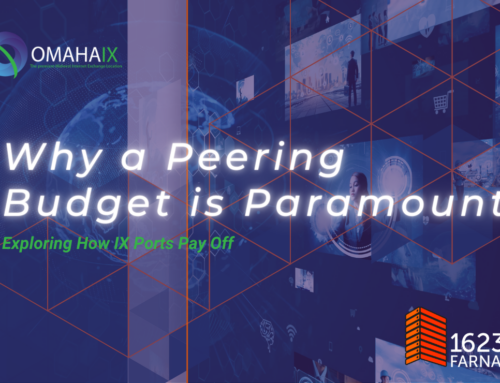Peering with directly interconnected networks offers a host of advantages (many of which we’ve discussed in the past) that are vital to the evolving enterprise and for broadband delivery. These benefits include speed, control, optimized performance and more — but let’s face it, cost pressures are what make many decisions for many businesses going through a digital transformation or delivering superior broadband service to customers.
It’s unavoidable that business teams take expenses into account, even when the business is trying to make its services and operations more streamlined and high-quality than ever before. Teams tasked with innovation still have stakeholders and board members to answer to, and a lot of the questions are about one simple thing: money. Today, the tools in any digital transformation need to display their monetary value upfront and clearly showcase how they can not only preserve what funds the business already has, but also generate more on an ongoing basis. What’s the ROI?
Of course, nobody can put a price on a solution that delivers true competitive advantages and innovation, and any technological option that helps provide a leg up in a densely packed market or offer more superior, reliable customer experiences is priceless. Fortunately, when it comes to peering, there’s no compromise to be made.
So, when your team is discussing its connectivity strategy (a major discussion point for most as service requirements, customer demands and growth trajectories expand and become more complex), here’s why peering should have top billing.
Understanding the Cost of Tradition
For many years, IP transit has been a mainstay of internet infrastructure. It’s a method of sending traffic that focuses on customer networks paying a third-party transit provider for access to a geographically advantageous network so they get their traffic where it needs to go. While this type of traffic management does get the job done, it’s fallen out of favor as the digital, interconnected world has continued to change shape.
This decline in usage hasn’t just been caused by demands for more control over how traffic gets moved (when it’s handed off to a third-party provider, the customer network can’t truly dictate the path it takes to the destination) in service of applications dependent on high speeds. In fact, it mainly comes down to cost.
As bandwidth demands and network scale requirements have gone up in the wake of more sophisticated services and applications (plus business expansions), so too has the amount that organizations must spend on transit connections to achieve their end goal. Unlike IP transit, peering works through direct, voluntary and symbiotic network connections — meaning there’s no cost to connect between organizations like there is in a transit framework. Although there are some providers with pricing systems that help high traffic commitments garner price advantages, when other methods of sending traffic that don’t include certain costs associated with transit become available, it renders transit less favorable.
Electing to use IP transit also opens up a world of other cost considerations for the organization. Businesses will find themselves having to take stock of how much bandwidth and traffic they can expect to use in the future, how consistent it will be in terms of volume, etc. These factors must be established in order to select a provider that offers a billing method to suit each need, whether it’s usage-based, tiered or flat-rate. With this in mind, it can be easy to see why a voluntary peering relationship is simpler in addition to being more cost-efficient.
The Peer-to-Peer Value
Let’s be fair — peering isn’t free, and it does come with its own costs. There are one-time setup fees for a port with an IX, and some costs for the connection. (You can look at the costs of OmahaIX here.) Still, it takes the complexity out of cost planning and removes additional expenditures by putting networks in charge of their own traffic — and that comes with a lot of benefits in itself.
Over the course of peering’s rise, one of the main bottlenecks has been availability. However, as IXs proliferate and more organizations have access to this strategic, cost advantage-rich option, it’s clear that anyone with access to an IX should be leveraging it as a method of keeping expenditures in check.
All in all, an argument certainly can be made that competition is consistently driving down costs of IP transit, but when you consider the array of other advantages peering provides, the choice is clear. These days, everything comes down to the bottom line, and getting better control and speed over traffic (plus reduced time to connectivity innovation) means better performance, better customer experiences, less customer churn, and ultimately more money in your pocket.
To learn more about the advantages of peering at OmahaIX, click here.



